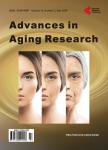Impact of Post Hepatitis C Chronic Liver Disease and Hepatocellular Carcinoma on Health Related Quality of Life
Impact of Post Hepatitis C Chronic Liver Disease and Hepatocellular Carcinoma on Health Related Quality of Life作者机构:Departments of Geriatric Medicine Faculty of Medicine Ain Shams University Cairo Egypt Departments of Tropical Medicine Faculty of Medicine Ain Shams University Cairo Egypt Department of Community Medicine Research National Research Center Cairo Egypt
出 版 物:《Advances in Aging Research》 (老年问题研究(英文))
年 卷 期:2015年第4卷第6期
页 面:177-186页
学科分类:1002[医学-临床医学] 100214[医学-肿瘤学] 10[医学]
主 题:Post Hepatitis C Virus Chronic Liver Diseases Hepatocellular Carcinoma Quality of Life Short Form-36 Health Survey
摘 要:Background: Post hepatitis C virus chronic liver disease (CLD) is prevalent among the Egyptian population with a bad impact upon their quality of life (QOL). Hepatocellular carcinoma (HCC) is one of the long term and fatal complications of CLD and it also has its negative impact on patient’s quality of life. Aim: To assess impact of CLD and HCC on the quality of life of group of hospitalized elderly patients. Methodology: Ninety elderly patients were divided into three groups: 30 elderly with post hepatitis C virus CLD, 30 elderly with HCC and 30 others free of liver disease as control group (Cn), all were recruited from the in-patient ward and the outpatient clinic of the Geriatric Department, Ain-Shams University Hospital. After giving consent, comprehensive geriatric assessment was done with assessment of their quality of life by using the Short Form-36 health survey (SF-36). Investigations including liver enzymes, serum albumin, serum bilirubin and abdominal ultrasound were done. Results: All QOL domains were the highest among control group, followed by HCC group and the least among CLD group. The differences were statistically significant in most subscales and total score [Mean of Cn = 81.9 ± 12.4, Mean of CLD = 47.5 ± 21.9, Mean of HCC = 62.3 ± 16.1;P Cn/CLD ≤ 0.001, P Cn/HCC ≤ 0.001, P CLD/HCC = 0.004]. Albumin was the only biochemical marker correlated positively with total SF score and two subscales (PF and EF) [r = 0.408;P = 0.025]. Conclusion & Recommendation: Our study showed a decrease in the QOL of Egyptian post hepatitis C virus CLD and HCC patients compared with Egyptian population norms. The results showed that CLD were more affected than HCC patients. This had a particularly serious negative impact on their life. The findings indicate a need for updated counseling and educational materials designed to provide adequate information and consistent healthcare service to this patient setting.



